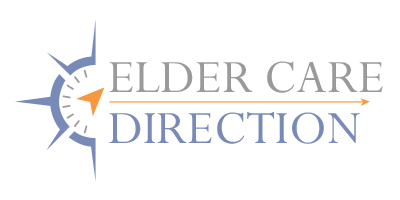Most people understand the importance of retirement planning. When they start working at their first jobs, they should also begin to save for their retirements by making contributions to their employer-sponsored 401(k) plans. However, certain employers do not offer these types of plans and might offer pensions or 403(b) plans instead. At Elder Care Direction, we can help you to understand the different types of retirement accounts and investment options that you might have available to you.
A 401(k) plan is an employer-sponsored retirement account that is tax-advantaged. A 403(b) plan is similar but is offed by nonprofit organizations, public education institutions, and hospitals. These are tax-sheltered annuity plans that give you the choice between investing in high-, middle- or conservative-risk securities. Your employer may also offer a matching amount for your contributions.
History
Before 403(b) plans were recognized by the Internal Revenue Service, some tax-exempt employers placed money into annuity contracts for the benefit of their employees. These were usually individual annuities that were owned by the individual employees.
The IRS put section 403(b) into place in 1958 for the purpose of limiting the contribution amounts to these annuities. At that time, 403(b) participants could only invest in insurance annuity products. Congress added a provision to section 403(b) in 1974 that allowed participants to invest in mutual funds in addition to their annuity investments.
Modern 403(b) plans
Modern 403(b) plans function similarly to 401(k) plans. Both allow eligible employees to make pre-tax contributions into retirement plans through their jobs. The contributions that you make to a 403(b) or a 401(k) plan are made on a pre-tax basis. This means that you will not be taxed on your contributions until you begin to take distributions after you retire. Employers are also allowed to contribute to the plans of their employees, allowing you to benefit from having extra tax-free funds investing in your plan.
403(b) contribution limits
The elective deferrals that you can make to your 403(b) plan are limited. For 2019, you can contribute up to a maximum of $19,000 from your salary to your 403(b) plan. If you are aged 50 or older, you can contribute up to an additional $6,000 per year for catch-up contributions. This brings your total maximum contribution amount to $25,000.
The total amount that can be contributed to an employee’s 403(b) plan includes a combination of all of his or her own elective deferrals together with the contributions that are made by the employer. When these amounts are added together, they cannot exceed more than $56,000 or 100% of the taxable wages that you received during the most recent year that you worked.
Choosing your 403(b) investments
The primary difference between a 403(b) plan and a 401(k) plan is the availability of investment choices that are available. People who have 401(k) plans are able to select from a broader selection of investments, including exchange-traded funds, mutual funds, and individual securities. For 403(b) investors, however, the employees are only allowed to invest in annuities and mutual funds. This means that your investment choices with a 403(b) plan will be limited.
Annuities may be variable or fixed. Variable annuities work similarly to mutual funds. If you are invested in variable annuities, your income after you retire will depend on how well the investments have performed in the variable annuities. Fixed annuities offer guaranteed payouts and work similarly to pension plans.
Regardless of its type, the fees that are associated with an annuity will be higher than the fees for other investment products. However, the returns that you can expect to receive are generally more stable. For example, if you have a lifetime annuity, you will be guaranteed to receive an income from it for your life.
When you are trying to decide how you want to invest your money, it is important for you to consider the costs. You should think about the fees, any annual charges, the return on investment, the types of annuities, and the types of mutual funds. You should also try to understand the policies for cashing them out.
Using a 403(b) plan as a part of your overall retirement strategy
If your employer offers a 403(b) plan, it will serve as an important portion of your overall plan for retirement. However, it should not be everything. Planning for retirement should involve many different parts that fit together. You will need to determine when you will retire, your potential eligibility for Social Security and when to start receiving it, the amount of monthly income that you will need for your lifestyle, and more.
Schedule an appointment with Elder Care Direction
At Elder Care Direction, we work with older adults and their families to help them to plan for their retirement years. We can talk to you about the options that you might have and offer some guidance about the different types of savings options that you might have available to you. Fill out our online contact form to schedule an appointment.







